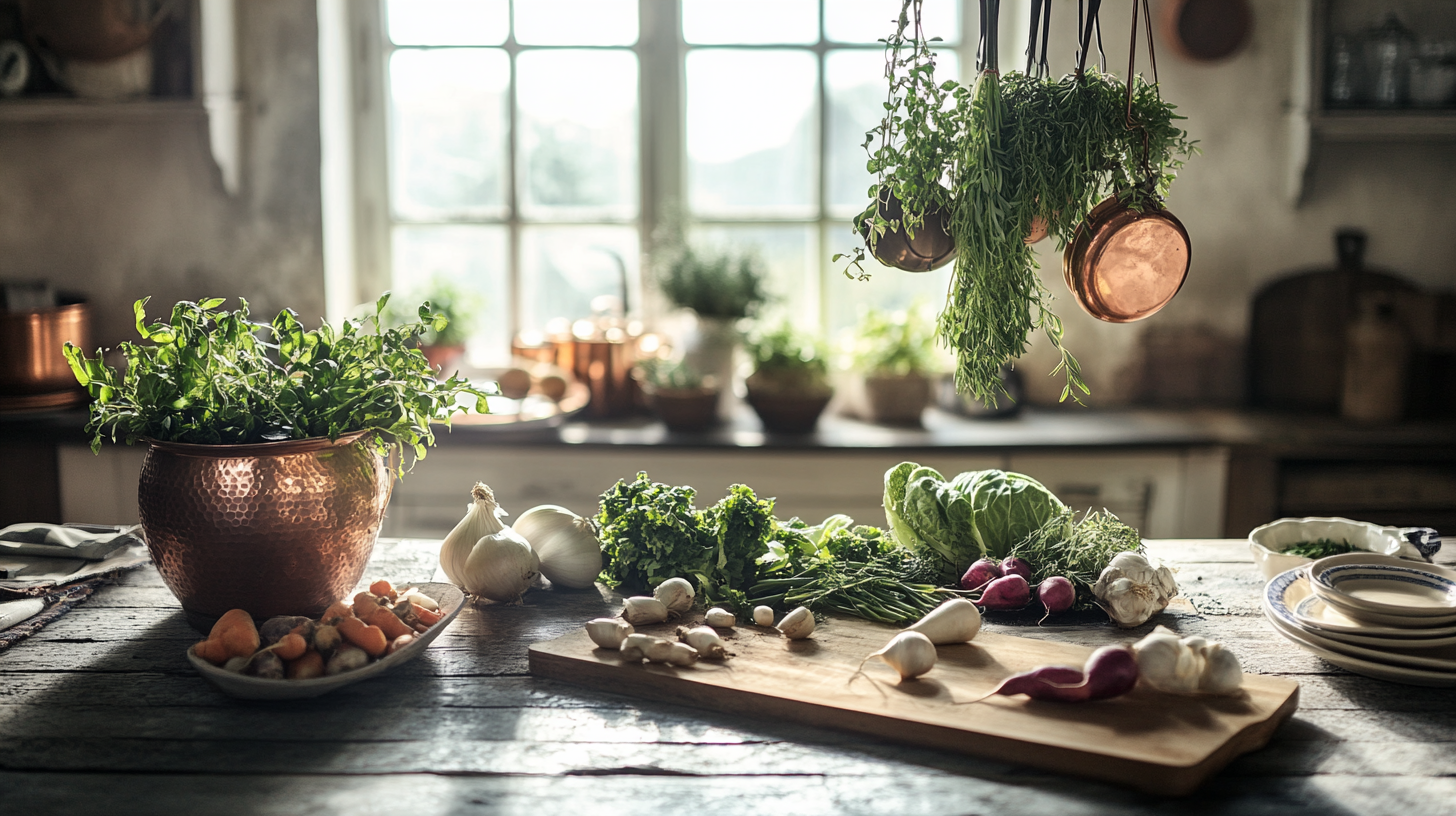There’s something magical about cooking with the seasons – the way each month brings its own ingredients, flavors, and cooking methods that perfectly match our cravings. As a chef who’s spent years crafting seasonal menus, I’ve learned that the best comfort food isn’t just about the recipe – it’s about capturing the essence of each month in a dish that warms both body and soul.
Understanding Seasonal Cooking
The secret to truly memorable comfort food lies in working with nature’s calendar. Each season brings specific ingredients at their peak of flavor and nutrition, often at their most affordable price point. Let’s explore how to make the most of each month’s bounty.
Winter Warmth (December – February)
December: Braised Short Rib Stew with Root Vegetables
The pinnacle of winter comfort, this dish transforms humble ingredients into something extraordinary.
Key Ingredients:
- Bone-in short ribs
- Winter root vegetables (parsnips, carrots, turnips)
- Fresh herbs (thyme, rosemary)
- Rich red wine
- Homemade beef stock
Pro Tips:
- Brown meat in small batches for better caramelization
- Add vegetables in stages to prevent overcooking
- Let meat rest overnight in braising liquid for maximum flavor
- Serve with crusty sourdough bread
January: Wild Mushroom Risotto with Truffle Oil
A creamy, warming dish that celebrates winter’s earthiest flavors.
Key Techniques:
- Toast rice until translucent
- Use homemade mushroom stock
- Add liquid gradually while stirring
- Finish with aged Parmesan and truffle oil
February: Roasted Butternut Squash Soup with Sage Cream
Simple ingredients transformed into liquid gold.
Secret Components:
- Caramelized onions
- Roasted garlic
- Fresh sage
- Apple for natural sweetness
- Toasted pepitas for garnish
Spring Revival (March – May)
March: Spring Pea Carbonara with Fresh Mint
A lighter twist on the classic that celebrates early spring produce.
Essential Elements:
- Fresh English peas
- Pancetta or guanciale
- Farm-fresh eggs
- Pecorino Romano
- Fresh mint
April: Herb-Crusted Rack of Lamb with Spring Vegetables
The ultimate Easter dinner or spring celebration.
Technique Focus:
- Perfect herb crust application
- Proper temperature monitoring
- Resting time importance
- Seasonal vegetable preparation
May: Asparagus and Goat Cheese Tart
A celebration of spring’s most anticipated vegetable.
Key Components:
- Homemade rough puff pastry
- Local goat cheese
- Fresh asparagus
- Lemon zest
- Fresh herbs
Summer Abundance (June – August)
June: Heirloom Tomato Gazpacho with Garlic Croutons
A refreshing twist on summer’s bounty.
Fresh Ingredients:
- Multiple varieties of tomatoes
- Persian cucumbers
- Sweet bell peppers
- Garlic
- Quality olive oil
July: Grilled Peach and Prosciutto Pizza
Sweet and savory summer perfection.
Technique Mastery:
- Proper dough handling
- Grill temperature control
- Ingredient layering
- Timing for perfect peaches
August: Sweet Corn Risotto with Basil Oil
Capturing summer’s golden moments.
Pro Methods:
- Fresh corn stock creation
- Proper risotto technique
- Basil oil preparation
- Garnish assembly
Autumn Harvest (September – November)
September: Wild Mushroom and Chestnut Pasta
A celebration of forest flavors.
Key Elements:
- Fresh pasta making
- Mushroom selection
- Proper cleaning techniques
- Sauce composition
October: Cider-Braised Pork Shoulder with Apples
The essence of fall in one pot.
Crucial Steps:
- Meat selection and preparation
- Proper braising technique
- Apple variety selection
- Sauce reduction
November: Roasted Squash and Sage Lasagna
A vegetarian comfort classic.
Layer Components:
- Homemade pasta sheets
- Butternut squash puree
- Bechamel sauce
- Fresh sage
- Aged cheese blend
Professional Tips for Seasonal Cooking
Ingredient Selection
- Build relationships with local farmers
- Learn proper storage techniques
- Understand peak seasons
- Master preservation methods
Kitchen Organization
- Prep ingredients systematically
- Keep seasonal ingredients accessible
- Maintain proper temperature zones
- Regular inventory checks
Common Mistakes to Avoid
- Rushing seasonal transitions
- Overlooking ingredient quality
- Improper storage methods
- Missing peak seasons
- Overcomplicated preparations
Conclusion
Seasonal cooking is about more than following recipes – it’s about developing an intuitive understanding of how ingredients change throughout the year and how to make the most of each season’s offerings. Start with these recipes as your foundation, but don’t be afraid to experiment and create your own seasonal traditions.

